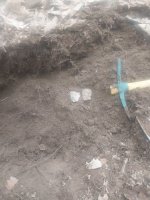Mojavehunter
Jr. Member
- Jun 7, 2024
- 35
- 113
I have some property in Central Oregon that I've found a few points on.



This has given me the obsession that you all enjoy so much!! Recently I spoke to a neighbor who has lived next to me for 50 years. He said that between my place and his he has collected hundreds of arrowheads over the years. Knowing that its been picked over pretty well should I keep looking or maybe sift around?? Assuming I had the legal permit for digging on my own land, would it be worth a look nd how should I start if so?



This has given me the obsession that you all enjoy so much!! Recently I spoke to a neighbor who has lived next to me for 50 years. He said that between my place and his he has collected hundreds of arrowheads over the years. Knowing that its been picked over pretty well should I keep looking or maybe sift around?? Assuming I had the legal permit for digging on my own land, would it be worth a look nd how should I start if so?
Upvote
8






